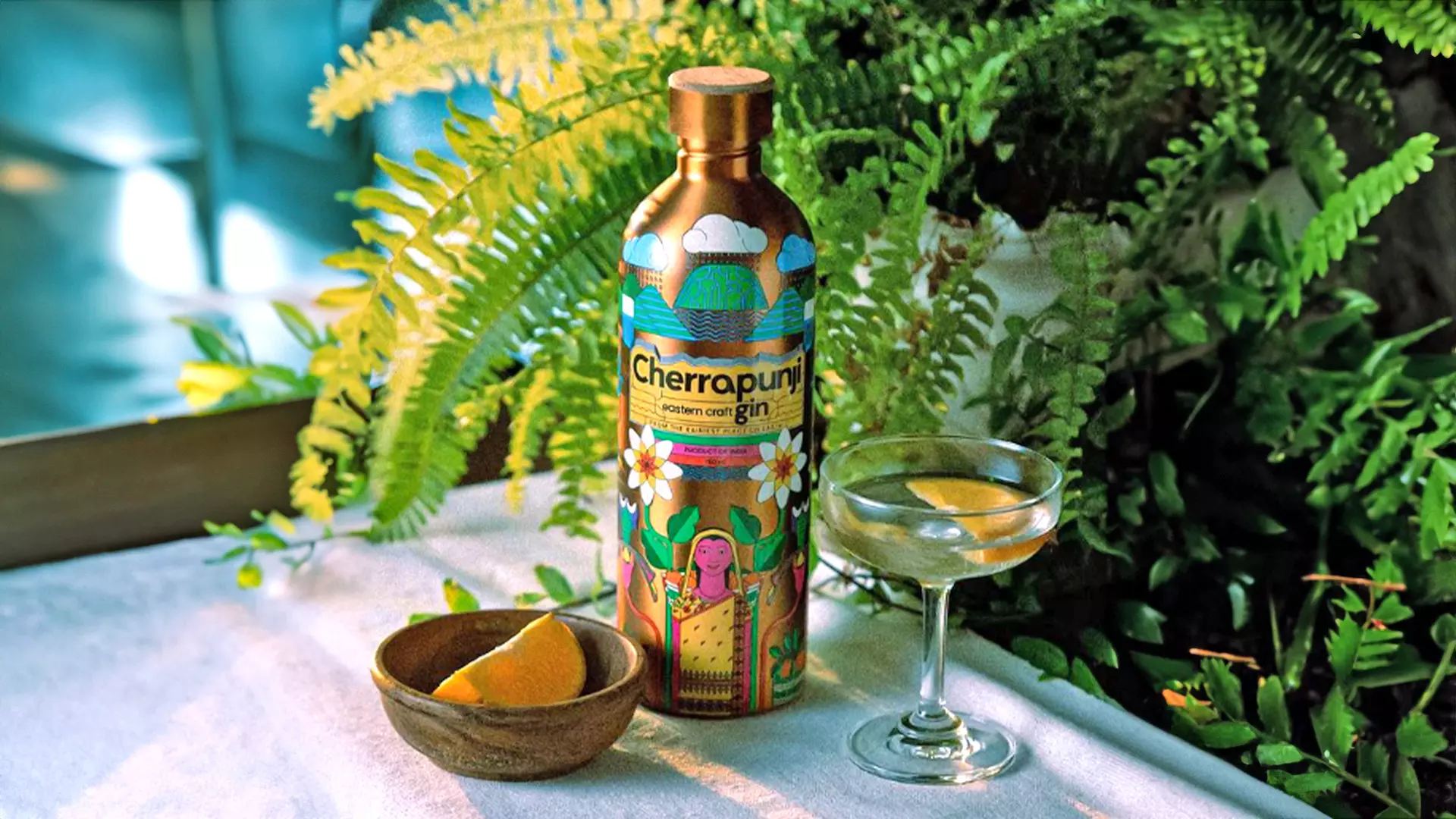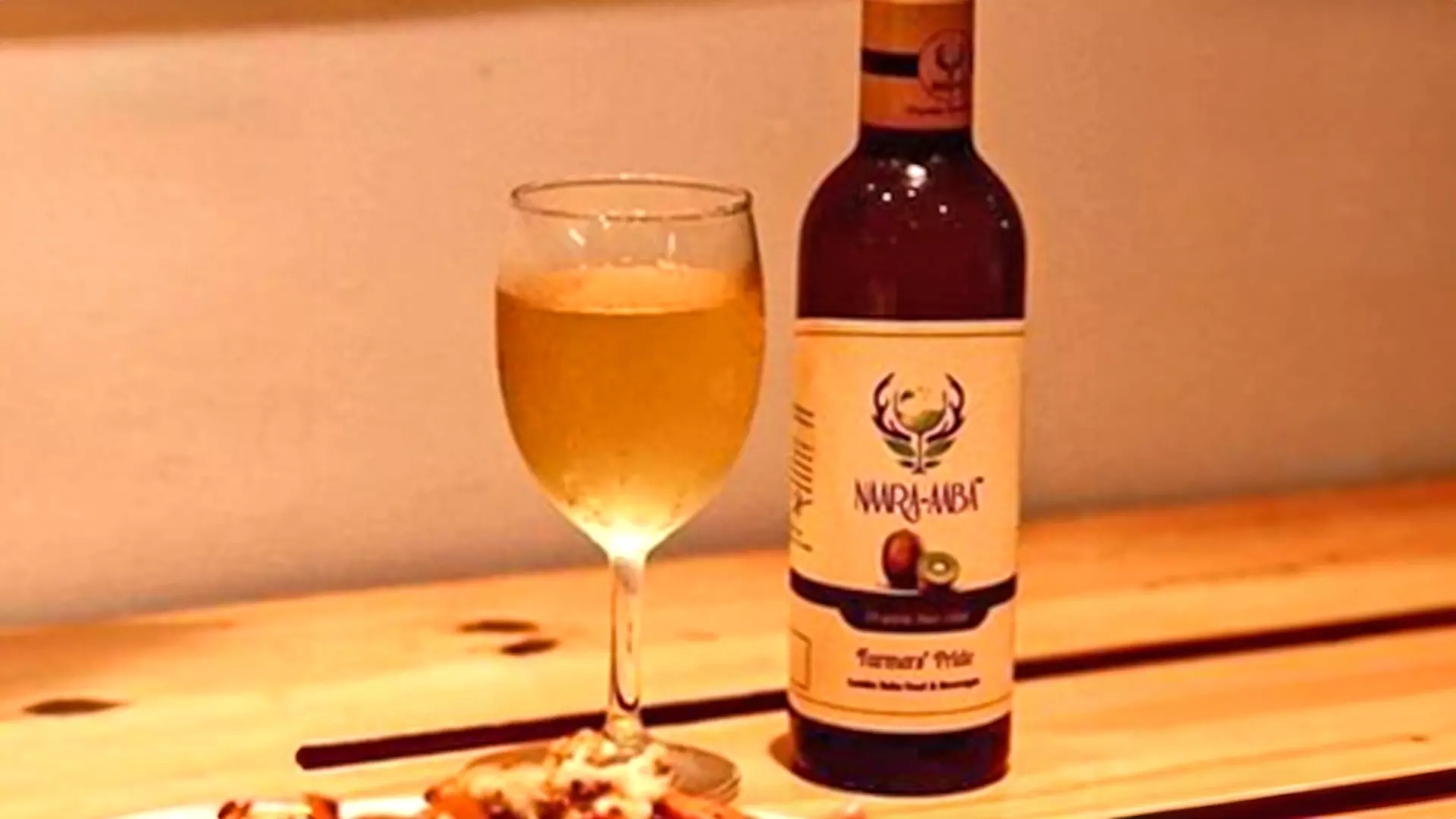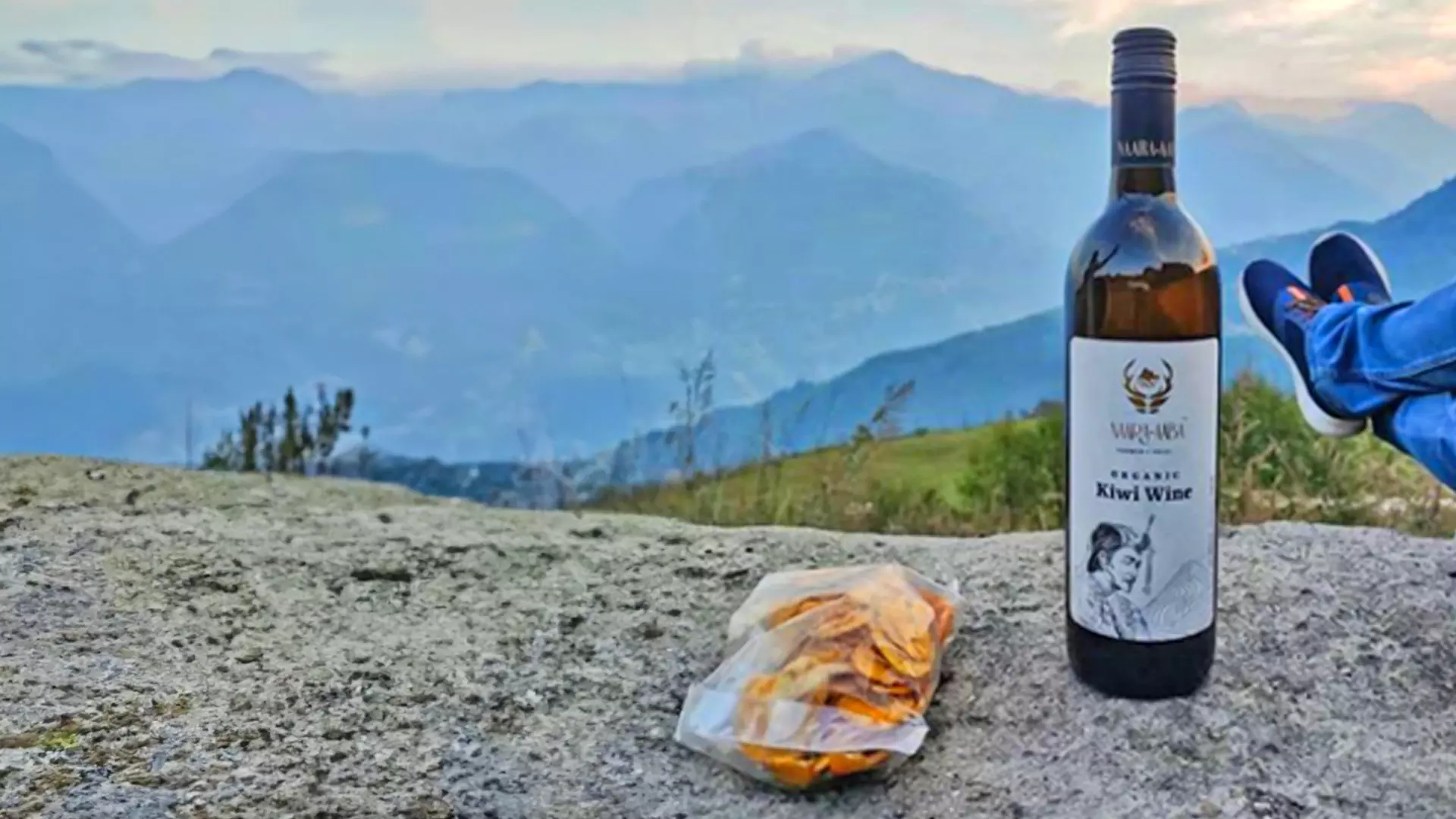
- Home
- India
- World
- Premium
- THE FEDERAL SPECIAL
- Analysis
- States
- Perspective
- Videos
- Sports
- Education
- Entertainment
- Elections
- Features
- Health
- Business
- Series
- In memoriam: Sheikh Mujibur Rahman
- Bishnoi's Men
- NEET TANGLE
- Economy Series
- Earth Day
- Kashmir’s Frozen Turbulence
- India@75
- The legend of Ramjanmabhoomi
- Liberalisation@30
- How to tame a dragon
- Celebrating biodiversity
- Farm Matters
- 50 days of solitude
- Bringing Migrants Home
- Budget 2020
- Jharkhand Votes
- The Federal Investigates
- The Federal Impact
- Vanishing Sand
- Gandhi @ 150
- Andhra Today
- Field report
- Operation Gulmarg
- Pandemic @1 Mn in India
- The Federal Year-End
- The Zero Year
- Science
- Brand studio
- Newsletter
- Elections 2024
- Events
How Northeast India’s craft spirits are blending a cocktail of taste and high

Fellow explorers of flavour will agree that India’s spirits game is on a sprint. No longer is it about the usual suspects, the cheap and dark whiskeys and rums. With unique flavours and innovative craftsmanship, homegrown labels of a range of spirits are not only stepping into the limelight but also bringing home international awards.There are the whiskies and the rums, of course: only...
Fellow explorers of flavour will agree that India’s spirits game is on a sprint. No longer is it about the usual suspects, the cheap and dark whiskeys and rums. With unique flavours and innovative craftsmanship, homegrown labels of a range of spirits are not only stepping into the limelight but also bringing home international awards.
There are the whiskies and the rums, of course: only this time around, they are superlative and globally acclaimed–from Indri Single Malt Whisky with over 35 global awards under its belt to Camikara Rum, India’s first pure cane juice rum and winner of the gold medal at the 2023 International Wine and Spirits Competition, and many others in between.

Cherrapunji Eastern Craft Gin has quickly risen to the top of the gin charts.
Hitching its wagon to this game is what was once India’s “remote” Northeast, where alcohol-making is as old as they come. Today, in a shift of narrative, the individual brew pots of villages are playing second fiddle to a new breed of independent distillers and winemakers who are blending native ingredients and traditional production techniques with contemporary packaging and taste into premium small batches that are travelling far and wide.
Their distinctive flavour profiles—resulting from the use of rainwater sourced from one of the world’s wettest places, or sticky rice or varieties of native basil and wild olives, or even bamboo charcoal filtration—are not only carving out pride of place in the artisanal and heritage brew spaces, they are also supporting rural livelihoods and in a sustainable manner.
Standing out
At the forefront of this exciting shift is Naara Aaba Winery, which even features as a case study at prestigious institutions like the Richard Ivey School of Business and the University of Western Ontario and which Union Minister of State for Food Processing Industries and Railways Ravneet Singh Bittu during a visit in October proclaimed as an “unstoppable force” in the country. Set along the azure waters of Subansiri River in Arunachal Pradesh’s lush Ziro Valley, Naara Aaba is agricultural engineer Tage Rita Takhe’s labour of love, with its wines crafted from organic fruits now also set for export to Taiwan. Born from her desire to utilise surplus kiwi that grows in abundance in the Ziro Valley, Takhe says in an Instagram post that Naara Aaba produces 60,000 litres per batch every four months and celebrates the diversity of fruit wines with flavours that are unique to Ziro.

Castle Hill Dark Knight is a hundred per cent corn whiskey that pays tribute to the great American whiskey tradition.
Down on the map, and around 480 km away in Meghalaya capital Shillong, Raincheck Earth is another symbol of the region’s burgeoning spirit-entrepreneurship. Master 2023 winner at the Global Gin Masters Competition, Silver winner at both the 2024 World Gin Awards and London Spirits Competition, and Bronze at the San Francisco World Spirit Awards, the distillery’s Cherrapunji Eastern Craft Gin has quickly risen to the top of the gin charts. The country’s first sipping gin with a flavour profile designed in the Netherlands and branded as ‘Sip the Rainiest Place on Earth’, it is made from rainwater treated non-chemically—a homage to the “two rainiest places on the planet—Mawsynram and Shillong—and the thousands who visit them,” says Raincheck CEO Mayukh Hazarika.
Nearly 400 km further to the east, in the Nagaland town of Dimapur, heritage mead brewery Tsuipu Product promises a “taste of the hills”. Possibly the most ancient alcoholic drink, a mead—likely the soma mentioned in the hymns of the Rigveda—derives its fermentable sugar from honey; so Tsuipu blends freshly-picked, wild fruits, especially gooseberry, with wild honey and then brews them in oak bourbon barrels for enhanced and contemporary flavour and taste. Founded in 2014 by vintner Lovi Achumi, Tsüipu’s flavour portfolio extends also to other fruits that grow in the region—kiwi, passion fruit, peach, strawberry, dragon fruit, and mulberry.
On the indigenous lane
Then there is the heritage lane, where a couple of distilleries, riding on the back of the 2016 Heritage Liquor Policy of the Assam government, are crafting indigenous tipples into premium heritage brews. Much like Madhya Pradesh with mahua and Goa with cashew feni, Assam too hoped to “put stiff competition to country liquor which is more injurious than local brews” by commercialising the latter through the policy. The first to get a licence and start on this fast lane was Deep Jyoti Dowari in 2022, with a boozy rice brew unit in Demow village in Sivasagar district.
The brand Luk Lao, which Arijit Purkayatha, a travel adviser and CEO of Guwahati-based Koyeli Tours & Travels, says is “just like the Japanese sake”, was also joined by a ‘still’ rice wine that year. Culmination of almost a decade of experimenting with haaz pani, the Ahom variant of rice wine, XAJ is what North-East Agro Products and Services (NEAPS) founder Akash Jyoti Gogoi says is “a handcrafted liquor and a cultural artefact”. Lately, he has even introduced an innovative sparkling version, XAJ Ultra Lite.

Naara Aaba’s ‘Happy Visitors’ stories similarly post how its wines are helping “create new friendships and unforgettable experiences” with people from around the world.
Another such ‘heritage’ brew is 7 United, deriving from the bitchi brew of the Garo tribe of Meghalaya. India’s first-ever handcrafted canned carbonated rice beer, this product from Tura in Meghalaya is what Keenan K Marak, its founder, says “pays tribute to the seven sisters of the Northeast”. Then there is Judima, the eponymous brand of GI tagged judima, the indigenous brew of the Dimasa tribe of Assam that is sold through cooperatives like Judima Tradi¬tional Brewers’ Industrial Co-operative Society Ltd (JTBICS) and boasts of significant cultural and ritualistic import.
Interestingly, in a giant leap of faith, taking a decade to perfect under the guidance of Scottish master blender John McDougall, consultant at over 35 distilleries worldwide, including Glenfiddich, Laphroaig and Balvenie, Assam-based Radiant Manufacturers is even making small batch whiskeys whose flavour profile owes its singularity to bamboo charcoal filtration. Its Castle Hill Dark Knight, winner of the bronze medal at the London Spirits Competition 2023 and featured as one of the top five whiskeys to try in the October 19 publication date of Luxury Lifestyle Magazine, is a hundred per cent corn whiskey that pays tribute to the great American whiskey tradition.
Be local, go global
Infusing local botanicals and staying true to tradition, these spirits are building on the distinctive flavours of the region to curate exotic experiences and, many a time, also built rapport with similar global cultures. Take for instance discussions on collaboration between XAJ and Japan’s Sake breweries during Japan Embassy’s Food and Agriculture First Secretary Oota Masami’s visit to NEAPS in 2023. On October 27, the latter would in an Instagram post mention’s Masami’s appreciation of XAJ Ultra Lite and the “endless possibilities between Assam and Japan not just in agriculture but also cultural exchanges”. Naara Aaba’s ‘Happy Visitors’ stories similarly post how its wines are helping “create new friendships and unforgettable experiences” with people from around the world.
And as for Cherrapunji Eastern Craft Gin, which claims to be a “local signature made for a global palate”, the crafting happens in the Netherlands. Bottled into military-grade stainless steel bottles that feature an illustration—portraying the colourful life of Meghalaya—by Portland-based designer Reshidev RK, the gin blends rainwater with 12 botanicals native to the Northeast—cardamom from Garo highlands, peppercorns from Khasi highlands, juniper from Sikkim and Arunachal Pradesh, smoked Lapsang Souchong tea from Mizoram’s Lushai Hills, GI tagged Kaji Nemu or Assam lemon from Assam Valley and Khasi mandarin—into what YouTube channel Mix it up with Mendi has pronounced as No. 1 among 30 Indian gins.
Even Castle Hill Dark Knight whiskey with small batch owes its unusual flavour profile to what is local in character—the water of Dhansiri, a tributary of the Brahmaputra, corn grown locally in Karbi Anglong on the Assam-Nagaland border, the region’s climate, temperature, humidity, soil, and, of course, the bamboo charcoal filtration technique.
As for Tsuipu, whose “beverage ages in the land of festival-Nagaland, a land of mystic, migrated tribal farmers”, the composing ingredients are endemic to the state—fruits, wild honey from forests and mountain cliffs, wild olives, herbs such as native basil, and more. What gives the spirit its contemporariness and fruity bourbon taste though is in its aging over a year without yeast, in imported white oak barrels. Sweet and smoky 7 United is also loyal to the traditional sticky rice, locally known as minil, wanti, a fermentation starter made from rice and herbs, black clay pots and bamboo tubes. Similarly, for heritage brew XAJ which, with bora saul, a variant of sticky rice and 18 medicinal herbs, hopes to tap the palates of South East Asian expats in Gurugram and Bengaluru since, according to Gogoi, “their taste preferences are similar to those of the region, and the staple grain that binds is rice.”
For the planet
Such experimentation across the region owes much to its youth who, as Shillong-based wine enthusiast Darleen Sangma says “are seeking unique tastes and experiences that connect them to their roots”. Responding enthusiastically, the region, lush with unique spices, botanicals and grains—the source materials for craft beverages—is tapping deep into its spirits heritage and with innovative flair reshaping the landscape.
However, what is actually setting this breed of winemakers apart is their commitment to the community and the environment. The first Indian brand to make it to the Global Drinks Intel ESG Awards 2024 at Cannes, Cherrapunji Eastern Craft Gin’s use of naturally-treated rainwater as an alternative to groundwater, helps reduce energy consumption by 70 per cent. Its reusable stainless-steel bottles, adorned with vibrant artwork depicting the Northeast’s natural beauty, also embodies a commitment to sustainability.

India’s first organic kiwi wine, committed to sustainability and community development, Naara Aaba empowers rural households by employing regular and seasonal workers, most of whom are women.
Tsüipu, born from a desire to reduce waste of wild gooseberries that grow in abundance in Nagaland, today encapsulates both agricultural sustainability and community development. In Meghalaya, at 7 United, more than a quarter of the brewing is outsourced to local farmers and brewers to support rural livelihoods and promote shared prosperity. In Arunachal, Naara Aaba does likewise by “using the fresh surplus fruits of farmers”, says one of its Instagram posts. India’s first organic kiwi wine, committed to sustainability and community development, Naara Aaba empowers rural households by employing regular and seasonal workers, most of whom are women.
